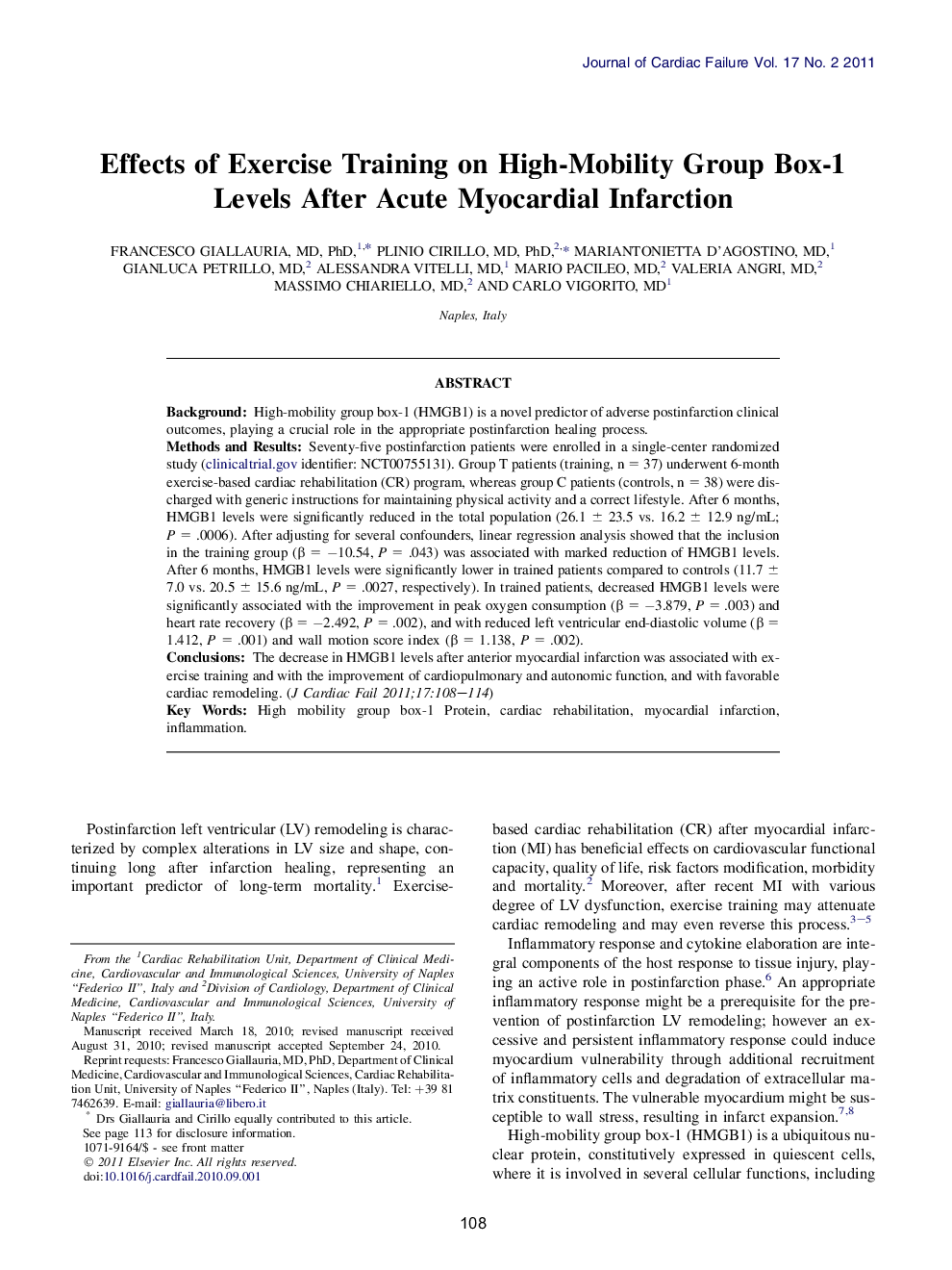| Article ID | Journal | Published Year | Pages | File Type |
|---|---|---|---|---|
| 2960787 | Journal of Cardiac Failure | 2011 | 7 Pages |
BackgroundHigh-mobility group box-1 (HMGB1) is a novel predictor of adverse postinfarction clinical outcomes, playing a crucial role in the appropriate postinfarction healing process.Methods and ResultsSeventy-five postinfarction patients were enrolled in a single-center randomized study (clinicaltrial.gov identifier: NCT00755131). Group T patients (training, n = 37) underwent 6-month exercise-based cardiac rehabilitation (CR) program, whereas group C patients (controls, n = 38) were discharged with generic instructions for maintaining physical activity and a correct lifestyle. After 6 months, HMGB1 levels were significantly reduced in the total population (26.1 ± 23.5 vs. 16.2 ± 12.9 ng/mL; P = .0006). After adjusting for several confounders, linear regression analysis showed that the inclusion in the training group (β = −10.54, P = .043) was associated with marked reduction of HMGB1 levels. After 6 months, HMGB1 levels were significantly lower in trained patients compared to controls (11.7 ± 7.0 vs. 20.5 ± 15.6 ng/mL, P = .0027, respectively). In trained patients, decreased HMGB1 levels were significantly associated with the improvement in peak oxygen consumption (β = −3.879, P = .003) and heart rate recovery (β = −2.492, P = .002), and with reduced left ventricular end-diastolic volume (β = 1.412, P = .001) and wall motion score index (β = 1.138, P = .002).ConclusionsThe decrease in HMGB1 levels after anterior myocardial infarction was associated with exercise training and with the improvement of cardiopulmonary and autonomic function, and with favorable cardiac remodeling.
